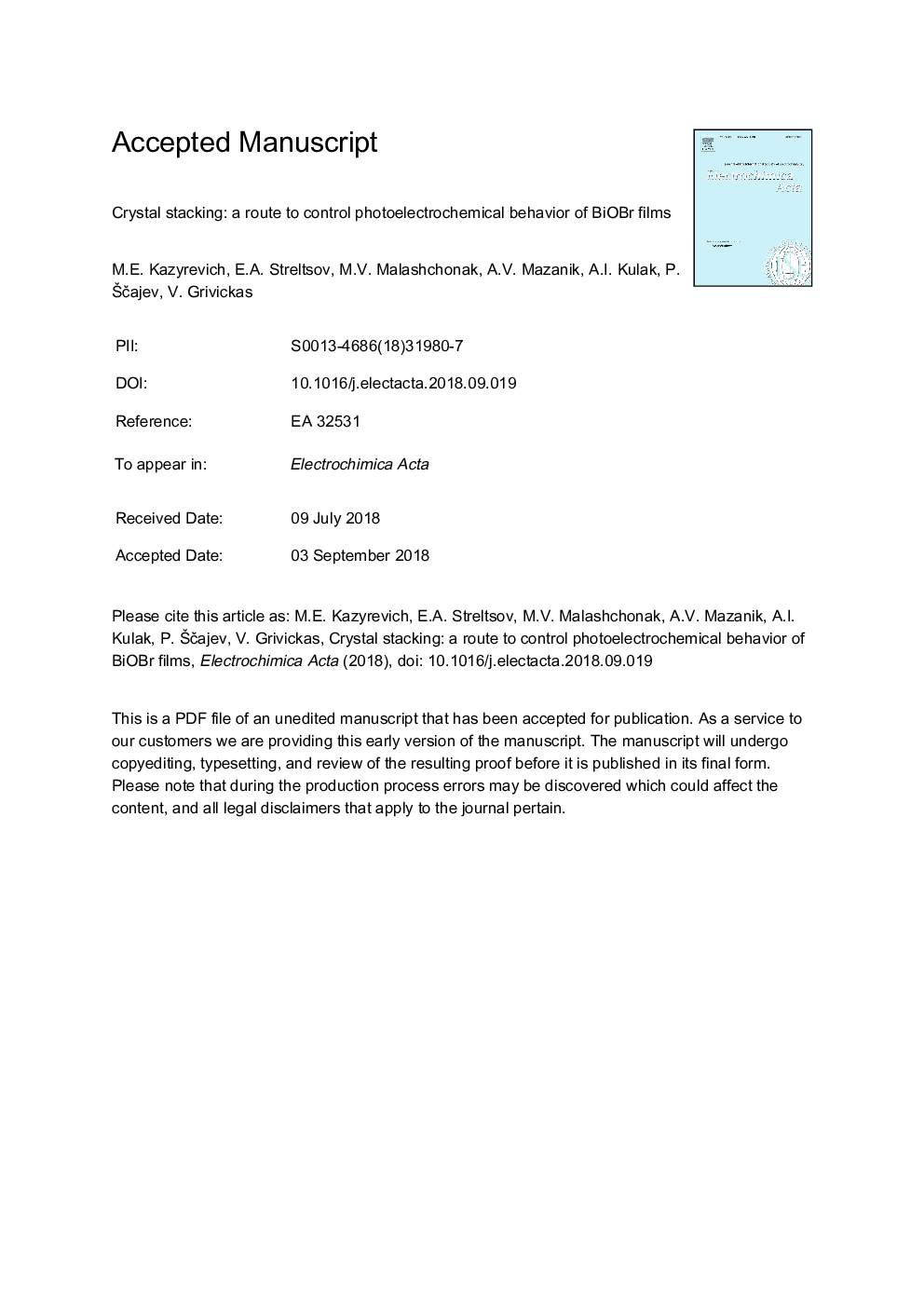| Article ID | Journal | Published Year | Pages | File Type |
|---|---|---|---|---|
| 10150330 | Electrochimica Acta | 2018 | 42 Pages |
Abstract
Two types of BiOBr thin films with substantially different crystal stacking and photoelectrochemical (PEC) properties were grown on conducting ITO substrates. In the first case, electrophoretically deposited closely-packed layers with parallel arrangement of (001) faceted plate crystallites (BiOBr||) exhibit p-type PEC behavior in Br2/Brâ aqueous solution generating cathodic photocurrent under electrochemical polarization. In the second case, BiOBr electrodes composed of plates with predominant perpendicular orientation to the ITO surface (BiOBrâ¥) demonstrate opposite PEC behavior and generate anodic photocurrent. This fundamental difference in PEC properties of BiOBr⥠and BiOBr|| photoelectrodes, which have close values of BET specific surface area (25 and 18â¯m2/g), plate thickness (15 and 16â¯nm) and comparable non-equilibrium charge carrier lifetime (in a sub-ns range), is explained by different stacking of plate crystals in them. Since BiOBr has better electronic conductivity within the (001) plane compared to that along the [001] direction, BiOBr⥠crystallites have better electrical contact with ITO and are subjected to electrochemical polarization, while BiOBr|| crystallites are predominantly in an open circuit condition and their properties are influenced by the boundaries between plate crystals.
Related Topics
Physical Sciences and Engineering
Chemical Engineering
Chemical Engineering (General)
Authors
M.E. Kazyrevich, E.A. Streltsov, Ð.V. Malashchonak, A.V. Mazanik, A.I. Kulak, P. Å Äajev, V. Grivickas,
